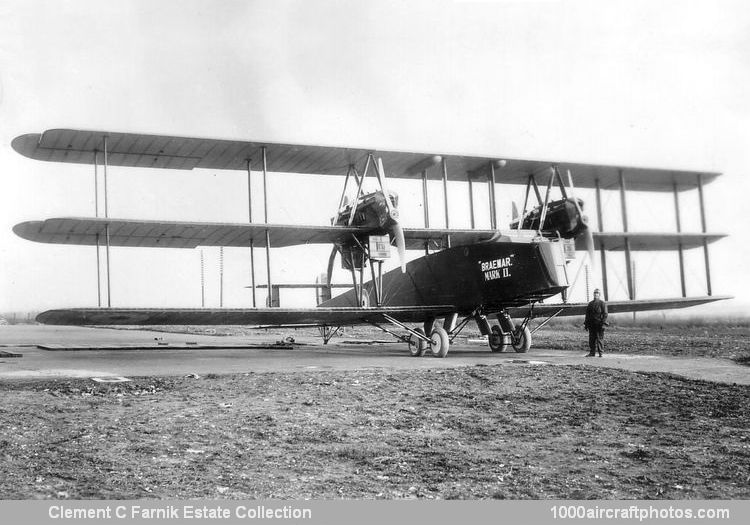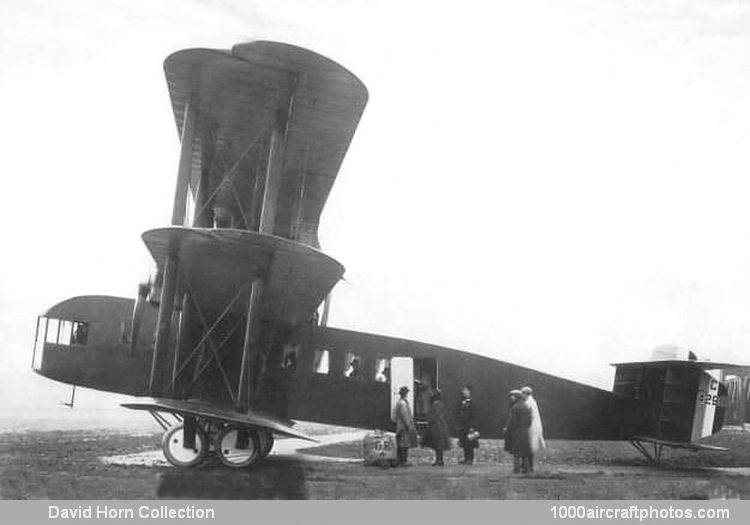10/31/2009. Remarks by
Johan Visschedijk: "Three of these triplane aircraft, designed by Frank Barnwell, were ordered for the RAF, eventually produced as follows.
Type 24 Braemar Mk.I
RAF s/n C4296 c/n 3751, long-range bomber, first flown August 10, 1918. Powered by four 250 hp Siddeley-Deasy Puma six-cylinder liquid-cooled in-line engines, mounted back-to-back in the middle wing, driving two tractor and two pushers propellers. Two pilots seated side-by-side, just ahead of the leading edge of the wings; a gunner in the nose. Another cockpit in rear fuselage with two guns mounted on a turntable on top of the fuselage, and a fourth gun mounted on gun ring in the floor. Featured four-wheeled landing gear, which wheels in tandem pairs to reduce drag.
Type 25 Braemar Mk.II
RAF s/n C4297 c/n 3752, long-range bomber, first flown 1919. Generally similar to Braemar Mk.I, but powered by four 410 hp Liberty 12A twelve-cylinder liquid-cooled V-engines. Totally wrecked when hitting hangar wall on take off at Martlesham Heath, Suffolk, August 16 1921, both crew were killed.
26 Pullman (C4298) (
David Horn Collection
Type 26 Pullman
RAF s/n C4298 c/n 3753, long-range transport, first flown May 1919, briefly registered G-EASP (April 14 to May 13, 1920). Similar to Braemar Mk.II, but with redesigned fuselage with enclosed cockpit, luxurious cabin fitted with a window and an electric foot-warmer for each passenger."


